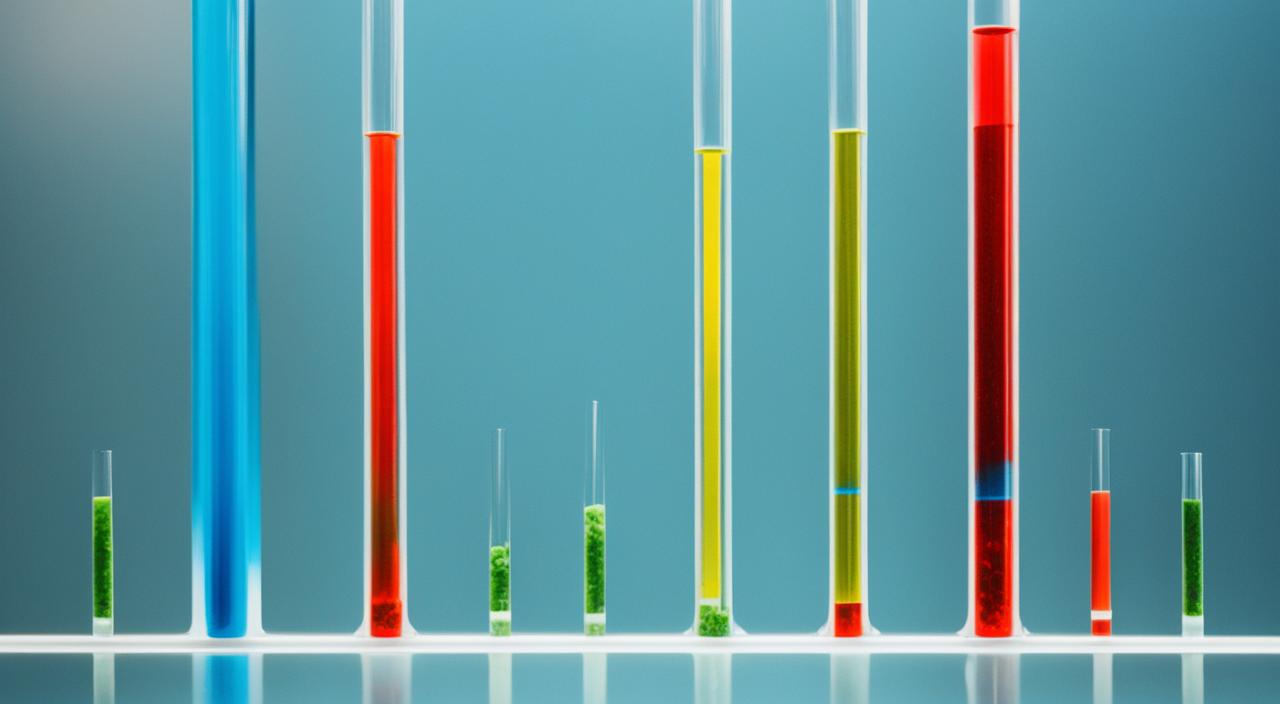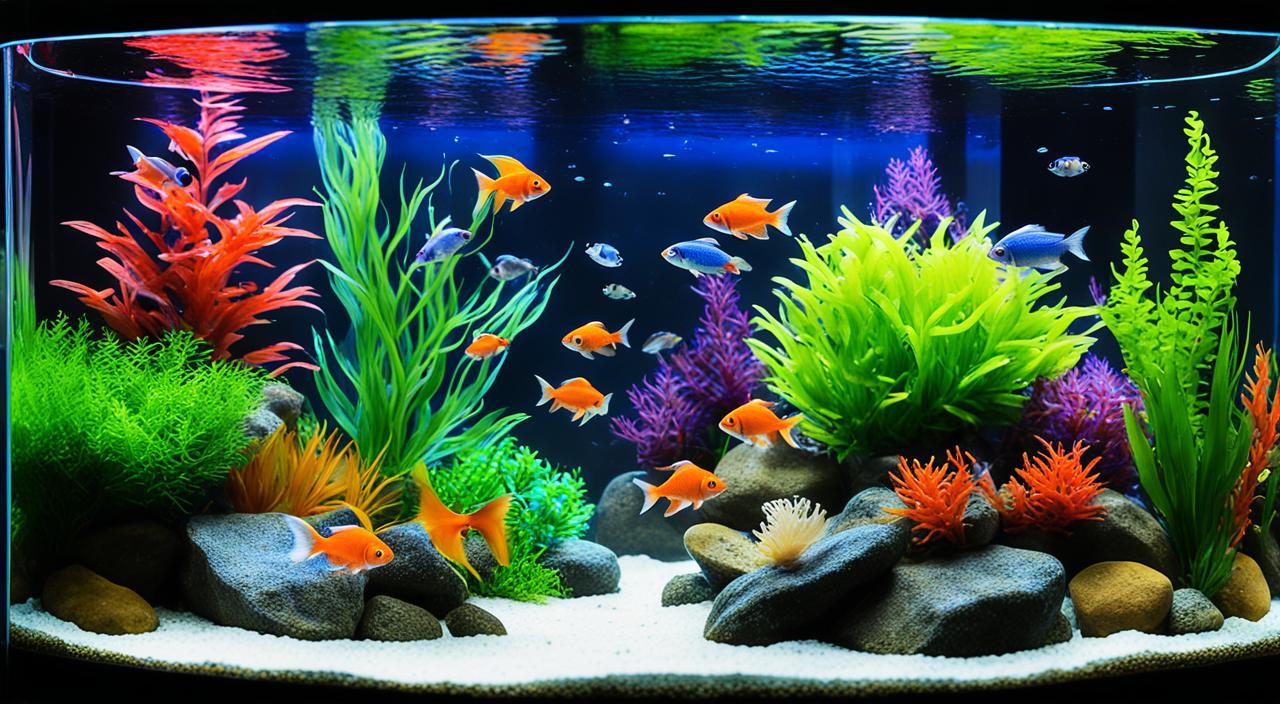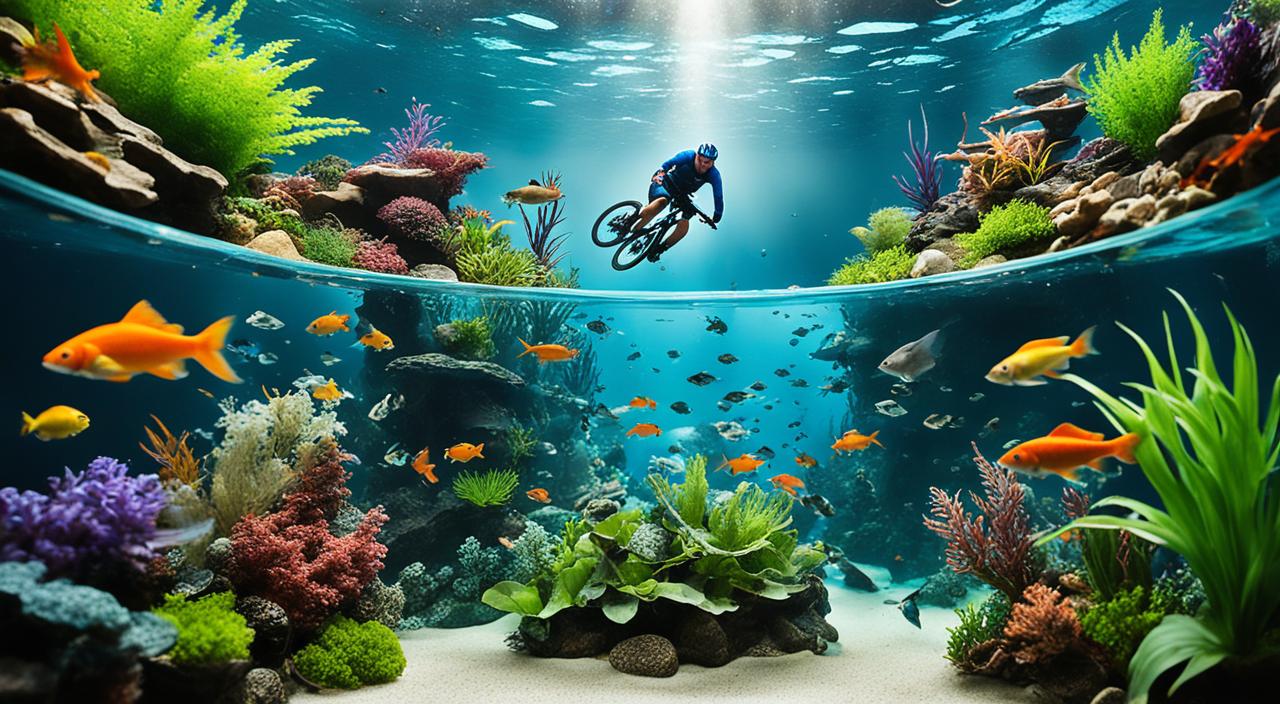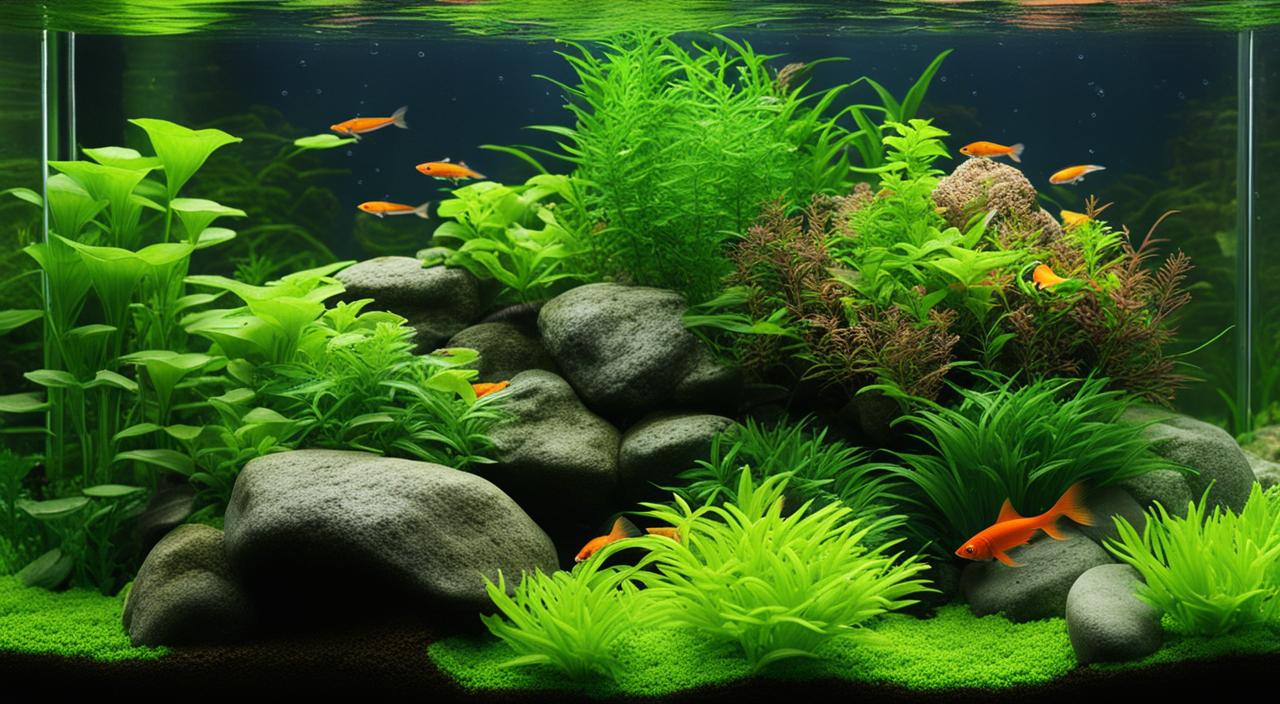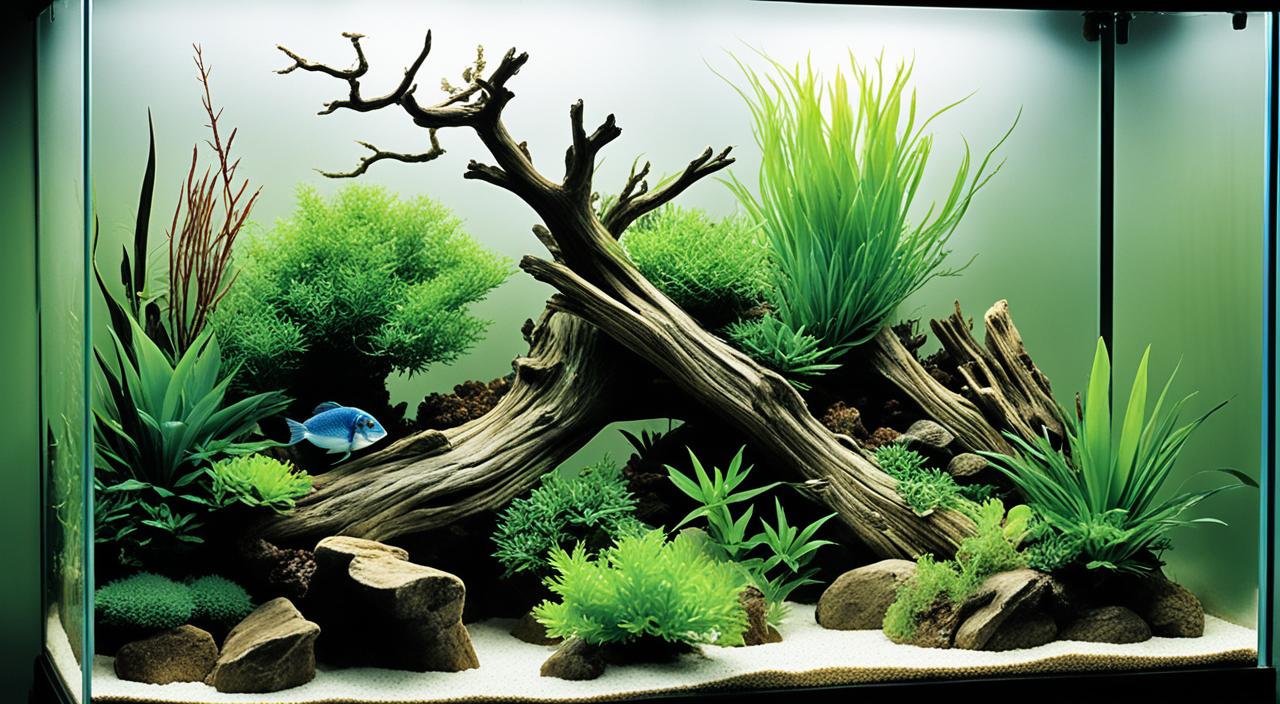The cycling process is essential in setting up a nano tank to ensure a healthy and thriving mini-aquarium ecosystem. The nitrogen cycle, or the biological cycle or nitrification process, plays a crucial role in maintaining water quality and keeping fish safe from ammonia toxicity. Understanding the stages of the nitrogen cycle is critical to successful nano tank cycling.
Key Takeaways:
- Nano-tank cycling is crucial for creating a stable and healthy environment for the fish.
- The nitrogen cycle is a natural process that converts harmful ammonia into less toxic substances.
- The cycling process can take anywhere from 2 weeks to 2 months, depending on various factors.
- Fishless cycling is recommended for beginners as it is more humane and safer for the fish.
- Tips to speed up the cycling process include maintaining optimal water conditions and adding nitrifying bacteria supplements.
What is the Nitrogen Cycle, and Why is it Important?
The nitrogen cycle is a vital process in nano tank setup and cycling. It involves the conversion of harmful ammonia into less toxic compounds, ensuring the well-being of fish and the overall health of the aquarium ecosystem. Let’s explore the three stages of the nitrogen cycle and understand why it is crucial for maintaining water quality.
Stage 1: Breakdown of Waste
During this initial stage, fish waste, decaying plants, and uneaten food release ammonia into the water. Ammonia is highly toxic to fish and can lead to serious health issues or even death. Now, let’s visualize the breakdown process with the help of a handy image:
Stage 2: Nitrification Process
In the second stage, beneficial nitrifying bacteria convert ammonia into nitrite, which is still harmful to fish. This process is known as nitrification and plays a crucial role in the nitrogen cycle. The conversion of ammonia to nitrite is essential for gradually establishing a healthy tank environment. Here’s a simplified diagram illustrating this stage:
Stage 3: Conversion to Nitrate
In the final stage, another beneficial bacteria converts nitrite into nitrate, which is less toxic to fish. However, high nitrate levels can still be harmful and lead to poor water quality. Regular water changes are necessary to keep nitrate levels under control and maintain a healthy balance in the aquarium.
In summary, the nitrogen cycle is essential for the break-in cycle of a nano tank. It ensures the conversion of harmful ammonia into less toxic nitrite and nitrate, providing a safe and healthy environment for fish to thrive. Understanding the nitrogen cycle is crucial for successful nano tank setup and cycling.
| Stage | Description |
|---|---|
| Stage 1 | Breakdown of waste releases ammonia |
| Stage 2 | Beneficial bacteria convert ammonia to nitrite |
| Stage 3 | Conversion of nitrite to nitrate by beneficial bacteria |
How Long Does It Take to Cycle a Nano Tank?
The duration of the cycling process in a nano tank can vary depending on several factors. These include water quality, temperature, and the presence of beneficial bacteria. On average, cycle a nano tank can take anywhere from 2 weeks to 2 months. It’s important to remember that the growth of beneficial bacteria is a slow and gradual process, so patience is key.
Regular testing of ammonia, nitrite, and nitrate levels is essential in determining the cycle’s progress. By monitoring these levels, you can assess how well the beneficial bacteria are establishing and the overall health of your tank ecosystem. Cycling the tank altogether before adding any fish is crucial to ensure their safety.
To better understand the timeline of the cycling process, here is a breakdown of the steps involved in cycling a small aquarium:
- Prepare the tank by setting up the filtration system, adding substrate, and filling it with dechlorinated water.
- Introduce an ammonia source, such as fish food or pure ammonia, to kick-start the nitrogen cycle.
- Monitor the water parameters regularly using an aquarium test kit. This will help you track ammonia, nitrite, and nitrate levels.
- As the cycle progresses, you will notice a rise in ammonia levels, followed by an increase in nitrite levels.
- The beneficial bacteria will gradually convert ammonia into nitrite and nitrite into nitrate.
- The cycling process is complete once both ammonia and nitrite levels have dropped to zero and nitrate levels are present.
Following these steps and monitoring the water parameters can ensure a successful cycle for your nano tank. Remember to be patient, as this process can take time. The image below provides a visual representation of the nitrogen cycle:
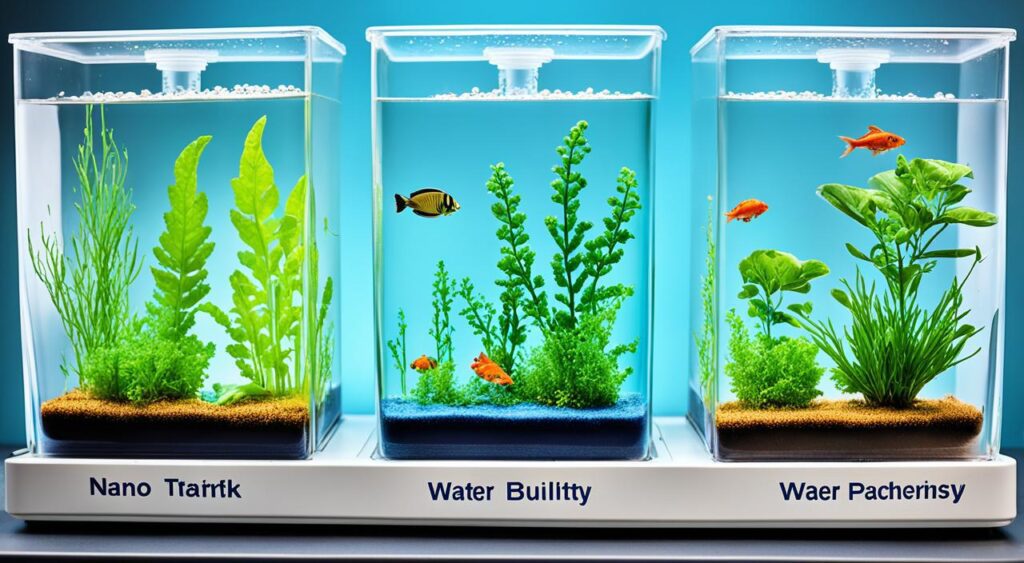
| Stage | Description |
|---|---|
| Stage 1 | Ammonia is produced by fish waste, uneaten food, and decaying plants. |
| Stage 2 | Nitrifying bacteria convert ammonia into nitrite. |
| Stage 3 | Another group of beneficial bacteria convert nitrite into nitrate. |
Understanding the duration and process of cycling a nano tank is crucial for creating a healthy and thriving environment for your fish. Once the cycle is complete and your water parameters are stable, you can safely introduce fish to your nano tank.
Fishless Cycling: A Beginner-Friendly Method
When it comes to cycling a nano tank, fishless cycling is a recommended method, especially for beginners. This approach allows you to establish a healthy and stable mini-aquarium ecosystem without subjecting fish to potentially harmful conditions.
Fishless cycling involves simulating the presence of fish waste by using an ammonia source, such as pure ammonia, to kick-start the nitrogen cycle. The goal is to cultivate a colony of beneficial bacteria that can effectively convert ammonia and nitrite into less harmful nitrate, ensuring optimal water quality for future fish inhabitants.
To carry out fishless cycling, you will need an aquarium test kit to monitor ammonia, nitrite, and nitrate levels throughout the process. Regular testing is crucial in determining the progress of the cycle and making adjustments when necessary.
Overall, fishless cycling is considered a more humane and safer method for both fish and hobbyists. It allows you to establish a stable environment and ensure the well-being of your future fish.
The Benefits of Fishless Cycling:
- Eliminates the need for subjecting fish to potentially harmful conditions during the cycling process.
- Allows for more accurate control and monitoring of ammonia, nitrite, and nitrate levels.
- Reduces the risk of fish stress, disease, and mortality associated with fish-in cycling.
- Allows you to establish a stable and healthy ecosystem before introducing fish to the nano tank.
Fish-In Cycling: Not Recommended for Beginners
Fish-in cycling is a method of cycling a nano tank that involves adding a small number of hardy fish to the tank during the cycling process. While this method can be used, it is not recommended for beginners due to the stress and potential harm it can cause to the fish.
During fish-in cycling, the fish are exposed to high levels of ammonia and nitrite, which can be toxic to them. This can lead to health issues and even death if not closely monitored. As a result, it is crucial to closely monitor ammonia and nitrite levels in the tank throughout the process.
If fish-in cycling is the only option available, there are some guidelines to follow to ensure the safety of the fish. Regular water changes are essential to keep ammonia and nitrite levels at safe concentrations. Testing the water regularly using an aquarium test kit will help monitor these levels and determine when water changes are necessary.
Key Points:
- Fish-in cycling involves adding fish to the tank during the cycling process.
- Not recommended for beginners due to the stress it causes to fish.
- Monitor ammonia and nitrite levels closely.
- Perform regular water changes to keep levels safe.
It is important to note that fish-in cycling should only be attempted by experienced hobbyists who are knowledgeable about cycling a nano tank and are prepared to provide the necessary care and maintenance required to keep the fish healthy.
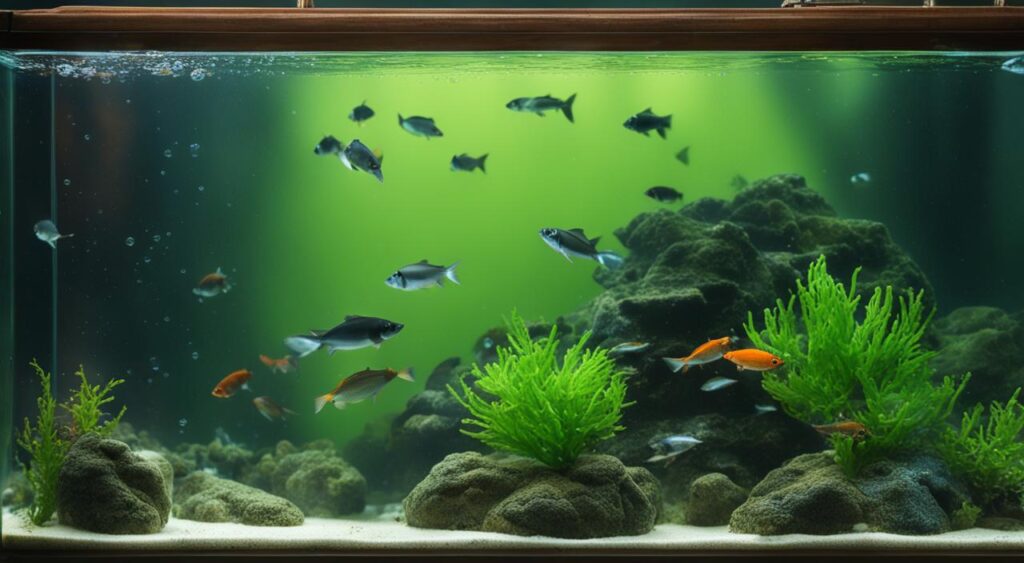
Tips to Speed Up the Cycling Process
While establishing the nitrogen cycle in a nano tank takes time, there are several strategies you can implement to expedite the process. By following these tips, you can create a favorable environment for the growth of beneficial bacteria and achieve a quicker and more efficient cycling of your nano tank.
Maintain Optimal Water Conditions
Proper maintenance of water conditions is crucial to encourage the growth of beneficial bacteria. Ensure that the temperature and pH levels in your nano tank are within the appropriate range for the specific types of bacteria involved in the nitrogen cycle. This will facilitate their development and increase their efficiency in breaking down harmful ammonia and nitrite compounds.
Consider Nitrifying Bacteria Supplements
An effective way to introduce or boost the population of beneficial bacteria in your nano tank is by using nitrifying bacteria supplements. Products like Instant Ocean BIO-Spira contain live nitrifying bacteria that can help expedite the establishment of the nitrogen cycle. These supplements can significantly reduce the time it takes for your nano tank to cycle, providing a head start for a healthy and stable ecosystem.
Feed Fish Sparingly
One key factor in minimizing waste and ammonia production is to avoid overfeeding your fish. Feeding them in moderation ensures that they consume the food entirely, leaving minimal leftovers that could contribute to excess ammonia levels. By maintaining a balanced and controlled feeding routine, you can help accelerate the cycling process in your nano tank.
Perform Regular Water Changes
Regular water changes play a vital role in controlling nitrate levels and ensuring a healthy environment for your fish. By removing accumulated nitrates through water changes, you prevent the toxin from building up excessively and harming your aquatic inhabitants. This is especially important during the cycling process when nitrate levels might temporarily rise. Regular water changes also help replenish essential minerals and ions necessary for the growth of beneficial bacteria.
Implementing these tips and strategies can significantly speed up the cycling process in your nano tank, allowing you to establish a thriving mini-aquarium ecosystem more quickly. Remember to monitor the water parameters, ammonia, nitrite, and nitrate levels regularly to ensure the success and well-being of your aquatic pets.
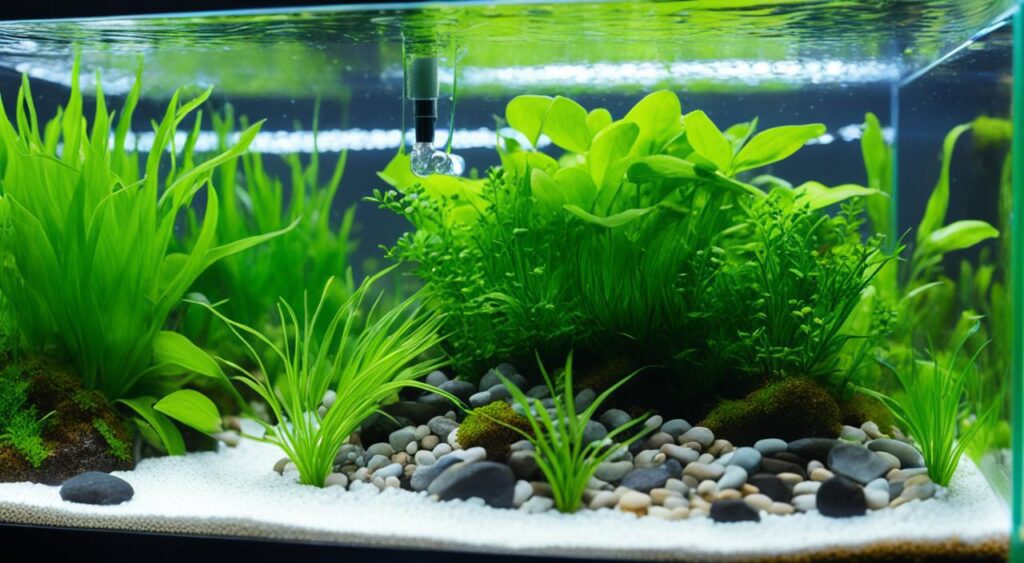
| Tip | Effect |
|---|---|
| Maintain Optimal Water Conditions | Promotes growth of beneficial bacteria |
| Consider Nitrifying Bacteria Supplements | Introduces or boosts beneficial bacteria |
| Feed Fish Sparingly | Minimizes waste and ammonia production |
| Perform Regular Water Changes | Controls nitrate levels and maintains a healthy environment |
Post-Cycling Care and Maintenance
Now that the cycling process in your nano tank is complete and ammonia and nitrite levels have dropped to zero, it’s time to gradually introduce fish to your mini-aquarium. Avoid the temptation to add too many fish at once, as this could lead to another spike in ammonia and nitrite levels, jeopardizing the health of your aquatic pets.
To maintain a healthy tank environment, it is crucial to continue with regular water changes and monitor the levels of ammonia, nitrite, and nitrate. These steps will ensure that the water quality remains optimal for your fish. Additionally, keeping nitrate levels in check is essential to prevent toxicity. You can achieve this by incorporating water changes into your routine or by introducing live plants or creating anaerobic areas in the tank.
Remember, ongoing care and maintenance are vital to the well-being of your fish and the longevity of your nano tank ecosystem. By diligently following these steps, you can create a thriving aquatic environment that your fish will call home.
FAQ
What is the nitrogen cycle and why is it important?
The nitrogen cycle is a natural three-stage process that allows beneficial bacteria to establish in the tank and filter media, keeping fish safe from ammonia. It is important because it helps maintain water quality and keeps fish safe from ammonia toxicity.
How long does it take to cycle a nano tank?
The duration of the cycling process in a nano tank can vary. Depending on factors such as water quality, temperature, and the presence of beneficial bacteria, it can take anywhere from 2 weeks to 2 months.
What is fishless cycling and is it recommended?
Fishless cycling is a recommended method for beginners to cycle a nano tank. It involves using an ammonia source, such as pure ammonia, to simulate the presence of fish waste and kick-start the nitrogen cycle. This method is considered more humane and safe for fish compared to fish-in cycling.
Is fish-in cycling recommended for beginners?
Fish-in cycling involves adding a small number of hardy fish to the tank during the cycling process. While this method can be used, it is not recommended for beginners due to the stress and potential harm it can cause to the fish. It should only be attempted by experienced hobbyists.
Are there any tips to speed up the cycling process?
Yes, maintaining optimal water conditions, adding nitrifying bacteria supplements, feeding fish sparingly, and performing regular water changes can help speed up the cycling process.
What should I do after the cycling process is complete?
Once the cycling process is complete, and ammonia and nitrite levels have dropped to zero, it is time to add fish to the nano tank gradually. Regular water changes and monitoring of ammonia, nitrite, and nitrate levels should continue to maintain a healthy tank environment.

